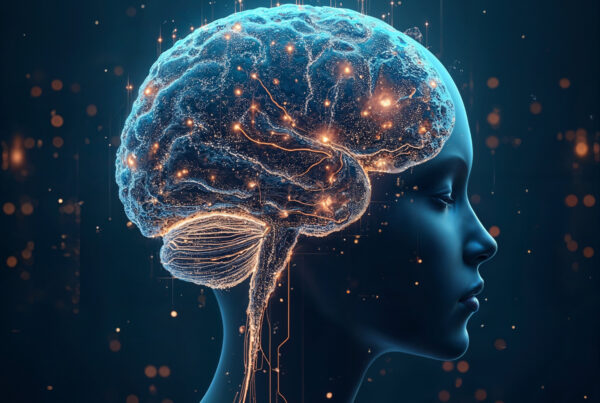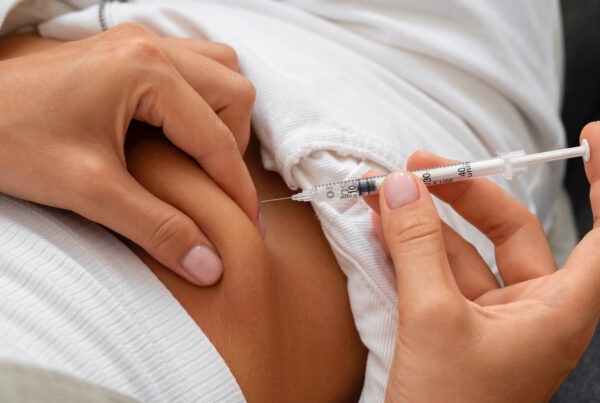In the study Ketamine normalizes subgenual cingulate cortex hyper-activity in depression (Morris et al., 2020), researchers explore a key neurobiological mechanism underlying ketamine’s fast-acting antidepressant effects. By focusing on the subgenual anterior cingulate cortex (sgACC)—a brain region often overactive in major depressive disorder (MDD)—this research reveals how a single ketamine infusion can dampen maladaptive brain responses to emotional stimuli. These findings not only confirm ketamine’s antidepressant potential but also provide insight into how specific brain circuits contribute to symptoms like anhedonia and anxiety.
Understanding how ketamine affects the sgACC is crucial, as this region has long been implicated in emotional regulation, reward processing, and depression severity. Functional MRI studies consistently show sgACC hyperactivity in individuals with treatment-resistant depression. This study demonstrates that ketamine may blunt that overactivity, particularly in response to positive reinforcement, offering a targeted neurobiological rationale for its therapeutic action.
The Subgenual Cingulate Cortex and Its Role in Depression
The sgACC (Brodmann area 25) is often described as a “hub” of negative emotional processing. It connects with key structures such as the amygdala, hippocampus, and prefrontal cortex—regions responsible for mood regulation, memory, and motivation.
In individuals with MDD, the sgACC frequently shows:
- Hyperactivity in response to emotional stimuli
- Abnormal glutamatergic signaling, especially under stress
- Associations with anhedonia (inability to feel pleasure) and persistent sadness
These characteristics make it a prime target for both pharmacological and neuromodulatory interventions. Indeed, deep brain stimulation (DBS) targeting the sgACC has shown promise in severe depression, but it’s invasive. Ketamine offers a less intrusive alternative with rapid effects.
Study Design and Key Findings
In this study, patients with major depressive disorder received a single intravenous dose of ketamine (0.5 mg/kg) over 40 minutes. Functional MRI scans were conducted before and after treatment to assess changes in sgACC activity.
Major findings include:
- A significant reduction in sgACC activity following ketamine administration
- The blunting of hyper-responsivity to positive incentives, rather than negative feedback
- Correlations between reduced sgACC activation and symptom improvement, particularly in measures of anhedonia
Importantly, this blunting of sgACC hyperactivity occurred rapidly—within hours of infusion—supporting ketamine’s classification as a fast-acting antidepressant.
Dual Functionality: Positive vs. Negative Feedback Processing
One of the study’s most intriguing contributions is its proposal of a double dissociation in how the sgACC processes emotional feedback:
- Posterior area 25 is primarily involved in responses to positive feedback, and is linked to anhedonia
- Anterior PL32 region is more responsive to negative feedback, and correlates with anxiety
This anatomical distinction may explain why ketamine, in this study, reduced activity only in response to positive stimuli, suggesting its antidepressant action may stem more from correcting anhedonic processing than addressing anxiety-related circuitry directly.
Neural Mechanism: How Ketamine Acts on the Brain

Ketamine is a well-known NMDA receptor antagonist, and its antidepressant effects are thought to involve:
- Glutamate burst: Blocking NMDA receptors leads to increased glutamate release
- Synaptogenesis: This burst stimulates AMPA receptors, promoting new synaptic connections
- Circuit resetting: Dampening overactive loops, like those involving the sgACC, may restore emotional balance
This study aligns with previous animal research suggesting that excessive glutamatergic signaling from the hippocampus to the sgACC contributes to depressive symptoms. By modulating this pathway, ketamine may help rebalance neural circuits involved in mood regulation.
Clinical Implications
These findings underscore ketamine’s value not just as a symptomatic treatment, but as a circuit-level intervention for depression. Key takeaways include:
- Ketamine can rapidly reduce dysfunctional brain activity associated with anhedonia
- The effect is region-specific, with a stronger impact on positive-reward pathways
- Brain imaging biomarkers like sgACC activation could help predict treatment response
Moreover, these results suggest that ketamine may be particularly helpful for individuals whose depression is marked by blunted reward processing, rather than heightened anxiety.
Limitations and Future Directions
While the study offers compelling evidence, it has limitations:
- Small sample size, limiting generalizability
- Short-term imaging; long-term changes remain unclear
- Only one ketamine dose was tested
Future research should explore:
- Longitudinal effects of repeated ketamine infusions
- Integration with behavioral therapies targeting anhedonia
- Comparisons with other neuromodulatory treatments like TMS or DBS
Conclusion
The study Ketamine normalizes subgenual cingulate cortex hyper-activity in depression provides powerful support for ketamine’s ability to act directly on dysfunctional brain circuits. By blunting hyper-responsivity in the sgACC—particularly in response to positive incentives—ketamine may offer fast relief from core depressive symptoms like anhedonia.
These insights not only deepen our understanding of ketamine’s mechanism of action but also pave the way for targeted, neurobiologically informed treatment strategies for depression. As brain imaging becomes more integrated into psychiatric care, studies like this highlight the promise of personalized medicine in mental health.
References
- Morris LS, Costi S, Tan A, Stern ER, Charney DS, Murrough JW. Ketamine normalizes subgenual cingulate cortex hyper-activity in depression. Neuropsychopharmacology. 2020;45(6):975–981. https://doi.org/10.1038/s41386-020-0629-6
- Drevets WC, Savitz J, Trimble M. The subgenual anterior cingulate cortex in mood disorders. CNS Spectr. 2008;13(8):663–681. https://doi.org/10.1017/S1092852900013754
- Mayberg HS, Lozano AM, Voon V, et al. Deep brain stimulation for treatment-resistant depression. Neuron. 2005;45(5):651–660. https://doi.org/10.1016/j.neuron.2005.02.014
- Nugent AC, Ballard ED, Gould TD, et al. Ketamine has distinct electrophysiological and behavioral effects in depressed and healthy subjects. Mol Psychiatry. 2019;24(8):1040–1052. https://doi.org/10.1038/s41380-018-0334-1
Price RB, Nock MK, Charney DS, Mathew SJ. Functional brain imaging correlates of emotion regulation deficits in major depressive disorder. Biol Psychiatry. 2009;66(7):607–614. https://doi.org/10.1016/j.biopsych.2009.04.041




